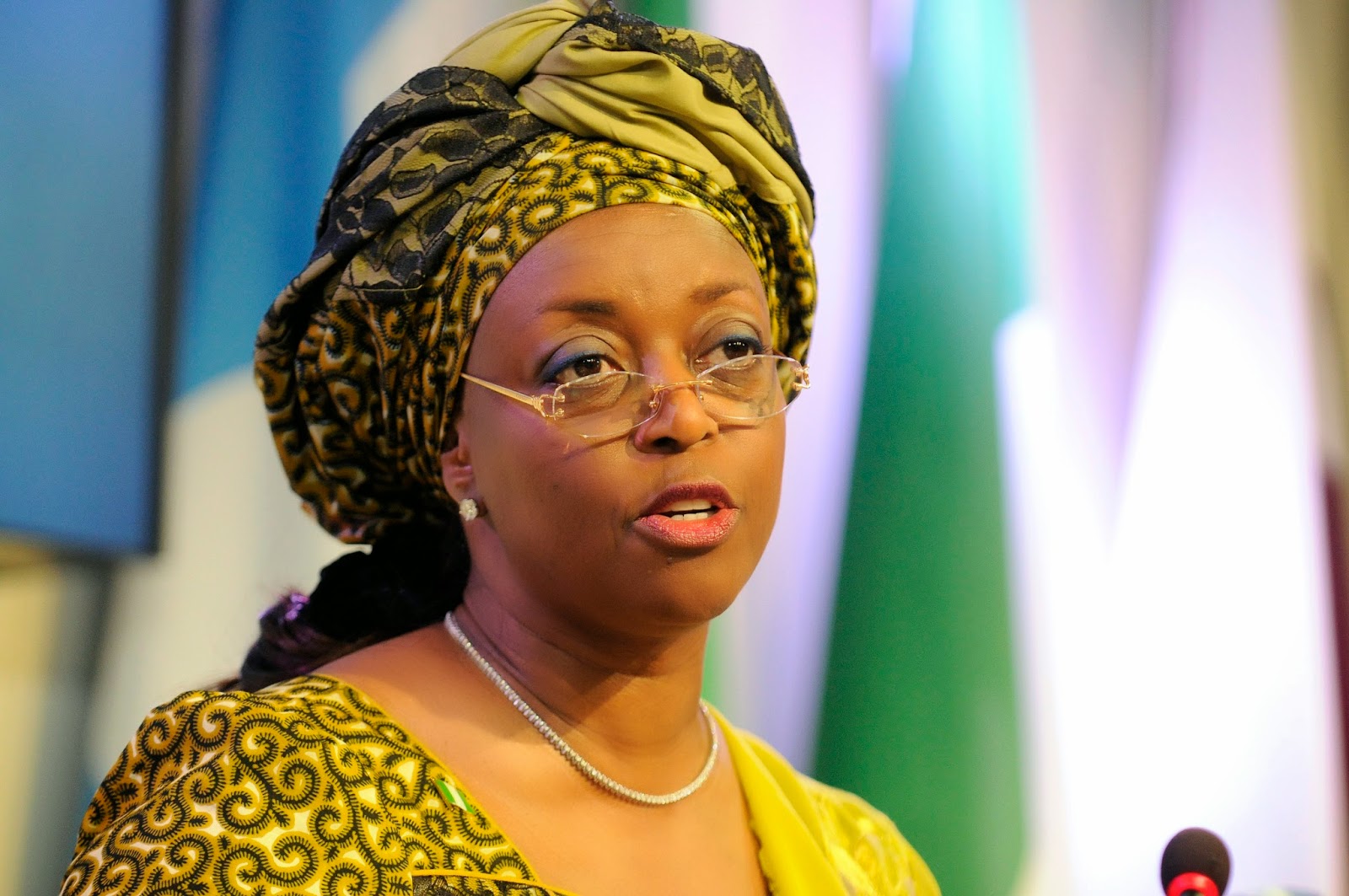by Diezani Alison-Madueke
The issue of environmental degradation in Ogoniland has been a protracted one. Their crusade for social justice appears to have merely created an intractable stalemate.
It is indeed a protracted challenge dating back several administrations. But I don’t agree that it is an intractable challenge. As with many other long standing unresolved issues in our polity, Mr. President has demonstrated the required political will and has put a road map of actions and engagements in place to move the Ogoniland challenge out of a stalemate situation.
The challenges had been escalated by an initial break down in trust but we have been able to create a broad base stakeholders involvement approach and have put a structure in place which we are presently aggressively fine tuning for the purpose of achieving remediation, restoration and reconciliation.
You may wish to recall that in July 2012, the President approved the establishment of the Hydrocarbon Pollution Restoration Project (HYPREP) as a Special Unit under the Ministry Of Petroleum Resources. HYPREP is the vehicle for the implementation of the actionable recommendations of the United Nations Environment Program (UNEP) report on Environmental Restoration in Ogoniland.
I have signed the draft gazette for the establishment of HYPREP and it has been forwarded to the Ministry of Justice for publication. This document will provide the rule of law guiding the implementation of the UNEP Report.
How is Hydrocarbon Pollution Restoration Project (HYPREP) different from other government contraptions over the years?
The use of the word contraption may not reflect a grasp of how government works but the principal differences in our own initiatives is our sincerity of purpose and the solution-focused political will of this administration.
Having said that, you also need to know that the HYPREP intervention is private sector driven with funding from major Oil-Companies operating in Nigeria. Government’s involvement is to the extent of ensuring that funds released are judiciously utilized to fully ensure a robust implementation of the UNEP recommendations.
What are the United Nations’ pertinent recommendations for the short, medium and long term management of the Ogoniland environmental issue?
The report is in the public domain, I believe. For a start, there are clear suggestions as to institutional structures that will be required to administer remedial actions. The recommendations spread across government, public health, environmental, operational and community issues that need to be addressed. It’s a holistic approach which brings the views of all the stakeholders on board.
In addition, the report suggested eight emergency measures that must be taken during the ‘Transition Phase’ while the institutional framework for implementing the various recommendations is being put in place.
The UNEP initiated a survey of all drinking water wells around those wells where hydrocarbons were observed and arranged measures based on the results. Their recommendation includes:
(a) Ensure that all drinking water wells where hydrocarbons were detected are marked and that people are informed of the danger;
(b) Provide adequate sources of drinking water to those households whose drinking water supply is impacted;
(c)People in Nsisioken Ogale who have been consuming water with benzene over 900 times the WHO guideline are recorded on a medical registry and their health status assessed and followed up; (d) Post signs around all the sites identified as having contamination exceeding intervention values warning the community not to walk through or engage in any other activities at these sites;
(e) Post signs in areas where hydrocarbons were observed on surface water warning people not to ï¬sh, swim or bathe in these areas;
(f) Inform all families whose rainwater samples tested positive for hydrocarbons and advise them not to consume the water; and
(g) Mount a public awareness campaign to warn the individuals who are undertaking artisanal refining that such activity are damaging their health.
The approved HYPREP structure provides for seven Technical Working Groups (TWGs) which will operate under the supervision of a National Coordinator who shall in turn report to me. I provided overall leadership for the restoration project. Also, there is an Advisory committee , Chaired by my colleague, the Honourable Minister of Environment composed of Ministers/CEOs of stakeholder MDAs and members from other constituencies to guide and provide oversight to the activities of HYPREP. A Monitoring and Sustainability Group in partnership with organisations from the United Nations (UNEP, UNDP, etc) will enforce compliance and sustainability.
Members of the TWGs are to be drawn from federal and State Agencies, Academia, the Oil Industry, and the communities.
So you can see there is nothing ad hoc or like a contraption about our initiative. This is a serious commitment to resolve a serious issue in a sustainable way.
What is the funding structure and time line for implementation?
The UNEP report recommended an initial capital of $1 billion contributed by the oil industry operators with prevailing interests in Ogoniland and the government to fund the remediation project. NNPC and the oil companies have agreed on a sharing ratio which I have approved as follows: a) Joint Venture Partners , – 80% b) The Reï¬neries – 5% c) Federal Government (through the 15% Ecological intervention Fund)
As for timeline, environmental restoration is not an event. It is a process that involves clean up, building of facilities and planting. Above all that, it involves engaging the communities and other stake holders and getting disparate views into a sustainable alignment before we even get the freedom to implement the remediation.
To this end, I wrote recently to Mr. Erik Solheim, the UNEP appointed special envoy for Ogoni Land on the need for a multi-stakeholder workshop on environmental assessment of Ogoniland UNEP report.
I believe the time has come to inject fresh urgency into this process and address collaboratively and collectively, how this might be progressed as a priority, to restore these lands and waters and to give the Ogoni communities fresh hope and opportunity. We would like the UNEP to facilitate the workshop. We hope to draw on the expertise of the relevant national and international agencies and the communities to construct a robust roadmap to deliver a comprehensive remediation programme. Delivery and restitution will be the focus of the workshop.
At this point, I want to ask about restoration for other Niger-Delta communities who have suffered similar ecological impacts. Are they on the radar?
Naturally, I am expecting that lessons from the Ogoni restoration work can be applied elsewhere in the Niger-Delta and, indeed, other regions of the country that at any time face similar environmental degradation problems. I want all hands on deck. Please join us. We are counting on your support.
Diezani Alison-Madueke, Nigeria’s Petroleum Minister spoke to journalists on renewed moves by the Federal Government to rev up environmental restoration work in Ogoniland in Abuja.







